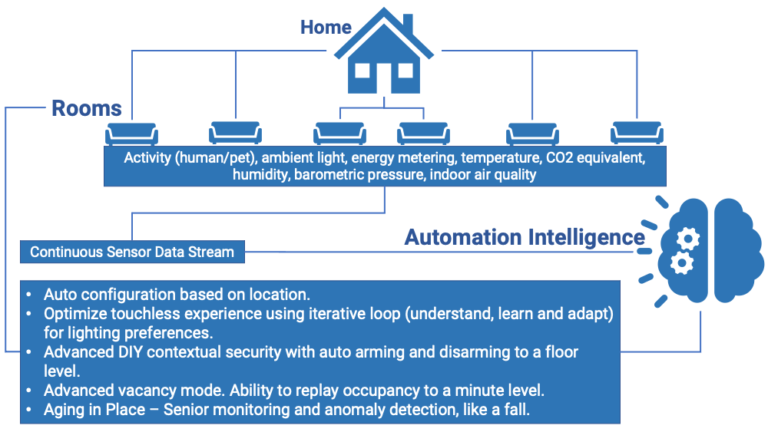Preface
Motion sensing light switches have been around for over 30 years.
Code mandates enforced early deployments of these switches in commercial environments like restrooms. Though the primary use case was energy savings, it eventually became a generalized convenience. Someone entering a restroom didn’t need to hunt for the switch in the dark. On leaving they didn’t need to turn off the light or concern themselves if there was someone still in the restroom.
As code mandates were amended for energy savings, vacancy switches became mandatory for certain residential areas. As people started experiencing motion sensor switches, they have been introduced to this initial and rudimentary level of automation.
Limitation of Motion and IoT Switches
Vacancy style motion switches were never intended for general home automation and cannot be deployed in most living spaces because of the lack intelligence and the limited and physical nature of changing settings (such as sensitivity and duration).
With the advent of IoT devices, regular light switches have become a new consumer toy by providing remote control via app and/or voice. The consumer still needs to command the switch to operate, so this cannot be deemed as true automation.
Unfortunately, vacancy switches that meet code requirements generally lack IoT technology. While many IoT switches have not embraced motion or other sensing and relied on just providing connectivity and requiring app/voice control.
An advanced light switch that can provide vacancy compliance and also to have the intelligence to provide automation in various rooms and areas of the home requires advanced software.
The experience we want
We would like our home to understand our needs. Like, walking into a kitchen with grocery bags in both hands in the evening and the lights coming on automatically; like those mandated by code in restrooms.
But the lights would not need to come on during the daytime when there is sufficient natural light or come on at a dim level late at night when doing a fridge snack run.
This is automation that is aware of the different times of the day, the present room conditions and the expectations of the occupant.
The Solution
To achieve this more advanced automation, sensors are required, though more importantly, intelligence at the edge (in the switch itself) is needed.
One area that AI has recently come to the forefront is in chatGPT, a language model AI that correlates crawled / indexed data with an inquiry that then allows the AI engine to start generating an answer. The answer is similar to how a human mind would start processing a question, comprehend and start answering it.
- Sensing
Similar to humans having 5 sensory inputs, for a holistic home automation solution, multiple and continuous sensing data availability throughout the home is necessary.
And this is where the struggle begins. Name one product that can provide such a continuous data stream throughout the home.
Even if such a product was available, where is this data going be stored, analyzed, and processed? There is a need for intelligence to make decisions to perform the operation the person would typically do manually. This new touchless experience is true automation and the goal.
When the BriteHome founding team was faced with finding a solution, we came up with a strategy of building a reference hardware design utilizing a multi-sensor framework. Sensors include activity / occupancy / presence, ambient light, power metering, temperature, humidity, indoor air quality, barometric pressure, and CO2 equivalent to help obtain the relevant home automation data.








